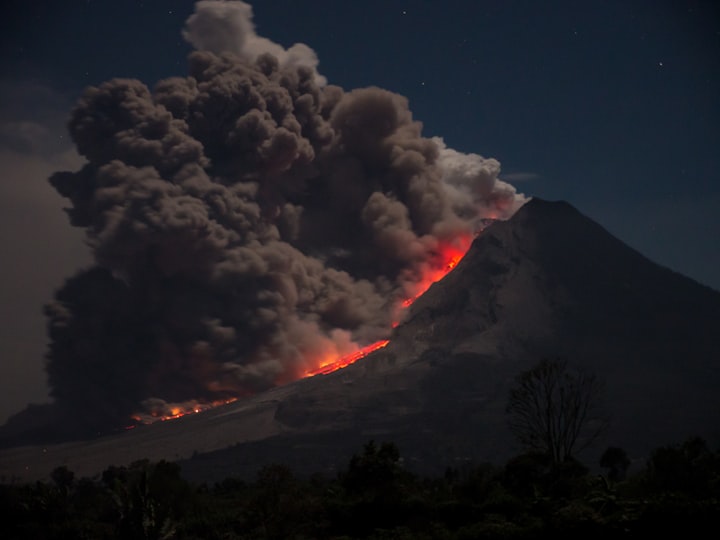Myths and Legends: The Five Most Mysterious Volcanoes in the World
Exploring the Myths and Mysteries of the Five Most Mysterious Volcanoes

I. Introduction
Volcanoes are some of the most awe-inspiring and mysterious natural phenomena on Earth. These powerful forces of nature have shaped the landscapes of our planet, created new islands, and even altered the climate. Volcanoes have also inspired myths and legends throughout history, as people have tried to understand and explain their often-unpredictable behavior. In this post, we will explore the five most mysterious volcanoes in the world, delving into their unique histories, myths, and scientific mysteries. We will learn about Mount Etna in Italy, Krakatoa in Indonesia, Mount Fuji in Japan, Popocatépetl in Mexico, and Kīlauea in Hawaii. Each of these volcanoes has its own intriguing story and secrets to reveal.
II. Mount Etna, Italy
Mount Etna is an active stratovolcano located on the east coast of the island of Sicily, Italy. It is the highest volcano in Europe, reaching a height of 3,329 meters (10,922 feet). Etna is known for its frequent and often violent eruptions, which have shaped the surrounding landscape and influenced the local culture and mythology.
One of the myths associated with Mount Etna is the story of the giant Enceladus, who was punished by the god Zeus and buried under the mountain. According to the myth, Enceladus's struggles to escape caused the earthquakes and volcanic eruptions on Etna. Another legend suggests that Etna was the forge of the Cyclops, who used the heat and fire of the volcano to forge the thunderbolts of Zeus.
Despite its long history of eruptions, there are still many scientific mysteries surrounding Mount Etna. One of the most intriguing is the unusual composition of its lava, which contains a higher amount of silica than most other volcanic lava. This has made Etna's lava more viscous, or thick and sticky, and has contributed to the formation of the volcano's distinctive cone shape. Another mystery is the fact that Etna has been erupting continuously for at least the past 2,000 years, making it one of the longest-active volcanoes in the world. Scientists are still trying to understand the factors that contribute to the volcano's longevity and why it has such a high level of activity.
III. Krakatoa, Indonesia
Krakatoa is a small island volcano located in the Sunda Strait between the islands of Java and Sumatra in Indonesia. It is most famous for its catastrophic eruption in 1883, which was one of the deadliest volcanic eruptions in history. The explosion was heard as far away as Australia and India, and the ash and debris from the eruption caused widespread darkness and cooling around the world.
There are several myths and legends associated with Krakatoa. One of the most well-known is the story of the princess who turned into a dragon and now lives in the volcano. According to the legend, the princess was cursed and transformed into a dragon as punishment for her vanity. Another legend suggests that Krakatoa was a sacred place for the local people, who believed that the spirits of their ancestors lived in the volcano.
In addition to its myths, Krakatoa also has several scientific mysteries. One of the most notable is the cause of its massive eruption in 1883, which is thought to have been triggered by the collapse of the volcano's magma chamber. Another mystery is the fact that Krakatoa is located on a tectonic boundary, where the Indian and Australian plates meet the Sunda plate. This makes it vulnerable to earthquakes and volcanic activity, and scientists are still trying to understand the complex geology of the area.
IV. Mount Fuji, Japan
Mount Fuji is the highest mountain in Japan and one of the country's most iconic symbols. Located on the island of Honshu, about 100 kilometers (60 miles) southwest of Tokyo, Mount Fuji is a stratovolcano with a distinctive symmetrical cone shape. It last erupted in 1707, and is currently classified as dormant.
There are many myths and legends associated with Mount Fuji, including the story of the deities Konohanasakuya-hime and Hoderi. According to the legend, Konohanasakuya-hime was a princess who was confined to the top of Mount Fuji because of a curse. Hoderi, the son of the sun god, climbed the mountain to rescue her and they eventually married and had children. The mountain is also considered a sacred place in Japan and has been a popular site for religious pilgrimages for centuries.
There are several scientific mysteries surrounding Mount Fuji as well. One of the most interesting is the fact that it is a "composite volcano," which means that it is formed by multiple eruptions rather than a single event. This has led to the formation of a complex system of lava flows and other geological features on the mountain. Another mystery is the unique composition of Fuji's lava, which contains a high amount of silica and is relatively viscous. Scientists are still studying the mountain to better understand its geology and the factors that have contributed to its formation.
V. Popocatépetl, Mexico
Popocatépetl is an active stratovolcano located in central Mexico, about 70 kilometers (45 miles) southeast of Mexico City. With a height of 5,426 meters (17,802 feet), it is the second highest peak in Mexico and one of the country's most prominent landmarks. Popocatépetl has a long history of eruptions, with the most recent one occurring in 2020.
There are several myths and legends associated with Popocatépetl, including the story of the warrior Popocatepetl and the princess Iztaccihuatl. According to the legend, Popocatepetl was a brave warrior who fell in love with Iztaccihuatl, the daughter of the ruler of the Aztec empire. When Iztaccihuatl's father refused to allow them to marry, Popocatepetl left to fight in a war and promised to return for her. Tragically, Iztaccihuatl was falsely told that Popocatepetl had died in battle, and she died of grief. When Popocatepetl returned and discovered what had happened, he was heartbroken and carried her body to the top of the mountain, where he remains to this day, guarding her grave.
There are also several scientific mysteries surrounding Popocatépetl. One of the most notable is the periodic nature of its eruptions, which occur in cycles of activity and dormancy. Scientists are still trying to understand the factors that trigger these eruptions and how to predict them. Another mystery is the risk that Popocatépetl poses to the surrounding area, as it is located near several major population centers and could potentially have a catastrophic impact if it erupts.
VI. Kīlauea, Hawaii
Kīlauea is an active shield volcano located on the island of Hawaii, the largest and southeasternmost of the Hawaiian islands. It is the most active volcano in the world, with ongoing eruptions since 1983. Kīlauea is located in Hawaii Volcanoes National Park and is a popular tourist destination.
There are many myths and legends associated with Kīlauea, including the story of the goddess Pele. According to Hawaiian mythology, Pele is the goddess of fire, lightning, and volcanoes, and is said to live in the volcano. She is known for her volatile temper and is associated with the destructive power of Kīlauea's eruptions. Kīlauea is also considered a sacred place by many Hawaiians, who believe that it is a gateway to the spirit world.
There are several scientific mysteries surrounding Kīlauea as well. One of the most interesting is the fact that it is a relatively young volcano, having formed only about 300,000 years ago. This makes it one of the youngest volcanoes on Earth, and scientists are still studying it to learn more about the processes that led to its formation. Another mystery is the unique features of Kīlauea's lava flows, which are some of the most fluid and fastest-moving in the world. These lava flows have shaped the landscape of the island and continue to pose a hazard to the surrounding area.
VII. Conclusion
Volcanoes are some of the most mysterious and fascinating natural phenomena on Earth. From the myth of the giant Enceladus beneath Mount Etna to the legend of the warrior Popocatepetl and the princess Iztaccihuatl on Popocatépetl, these powerful forces of nature have inspired myths and legends throughout history. They have also posed scientific mysteries that continue to challenge our understanding of the natural world.
We have explored the five most mysterious volcanoes in the world: Mount Etna in Italy, Krakatoa in Indonesia, Mount Fuji in Japan, Popocatépetl in Mexico, and Kīlauea in Hawaii. Each of these volcanoes has its own unique history, myths, and scientific mysteries, and they offer a glimpse into the power and mystery of nature.
There are many other mysterious volcanoes around the world that are worth exploring, and we encourage readers to learn more about these incredible natural wonders. Whether through scientific study or the myths and legends that have shaped our understanding of them, volcanoes continue to captivate and inspire us.





Comments
There are no comments for this story
Be the first to respond and start the conversation.